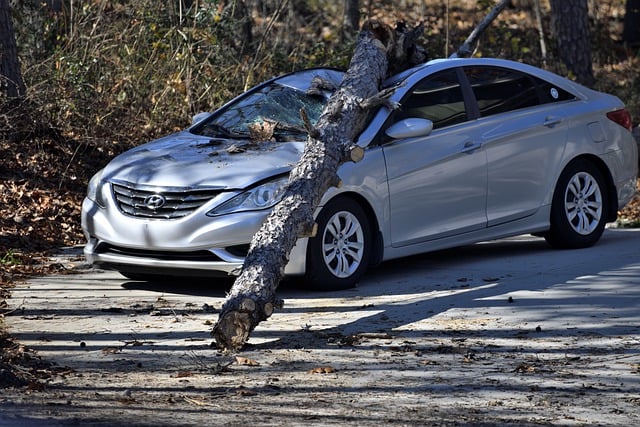When safeguarding one of your most valuable assets—your home—it’s imperative to navigate the realm of home insurance coverage with care. Homeowners insurance policies are not one-size-fits-all; they range from HO-1 to HO-5, each offering distinct protections. From basic structure coverage to comprehensive property and personal liability insurance, understanding your options is key to selecting a policy that suits both your needs and budget. This article delves into the nuances of home insurance policies, including factors influencing rates and how to obtain accurate quotes to tailor a plan that aligns with your specific requirements. Whether you’re a first-time homebuyer or an experienced property owner, this guide will help demystify the world of house insurance rates and home insurance coverage, ensuring you make informed decisions about your property insurance.
- Understanding Your Homeowners Insurance Options: A Guide to HO-1, HO-2, HO-3, and HO-5 Policies
- Deciphering Home Insurance Coverage Types: What Each Policy Means for You
- Factors Influencing House Insurance Rates: Comprehending Cost Drivers
- The Essence of Personal Liability Coverage in Homeowners Insurance
- Protecting Your Belongings with Home Contents Insurance
- Obtaining Accurate Home Insurance Quotes and Tailoring a Policy to Your Needs
Understanding Your Homeowners Insurance Options: A Guide to HO-1, HO-2, HO-3, and HO-5 Policies

When navigating the realm of home insurance coverage, it’s essential to familiarize yourself with the different policy types available. Homeowners Insurance policies are categorized into four primary forms – HO-1, HO-2, HO-3, and HO-5 – each designed to meet distinct needs and budgetary constraints.
The HO-1 policy is the most basic form of home insurance coverage. It provides a limited amount of protection, covering only specific events or perils as outlined in the policy. This type of coverage is often characterized by its low cost but also comes with restrictions on the types of claims you can make. For example, it typically includes damage from events like fire, theft, and vandalism but may exclude numerous other potential risks such as water damage, earthquakes, or floods.
Moving up from HO-1, the HO-2 policy expands your home insurance coverage to include a broader range of perils. While it still has limitations, this form provides more comprehensive protection than its predecessor. It covers named perils explicitly listed in the policy, which can include events like windstorms, hail, or falling objects. House insurance rates for HO-2 policies may be slightly higher than those for HO-1 due to the increased scope of coverage. Additionally, personal liability coverage is included, offering financial protection should someone get injured on your property and decide to sue you for damages.
The HO-3 policy represents a significant leap in home insurance quotes, offering an ‘all risks’ approach to property insurance. This means that it covers all perils except those explicitly excluded in the policy. It not only protects the physical structure of your house but also your personal belongings – known as home contents insurance – against a wide array of events. HO-3 policies are comprehensive, making them suitable for homeowners who want robust coverage for both their property and its contents.
Finally, the HO-5 policy is the most inclusive form of home insurance coverage available. It provides ‘all risks’ protection for both the dwelling and personal belongings, similar to an HO-3 policy, but with a few key differences. The HO-5 policy covers all perils, including those that are excluded from an HO-3 policy, offering the most extensive level of home insurance coverage. Additionally, it typically comes with replacement cost coverage for your personal property, meaning you’ll receive funds to replace items with new ones even if their actual cash value was lower. House insurance rates for HO-5 policies tend to be higher due to the extensive nature of the coverage provided.
In conclusion – without actually stating a conclusion as per your instructions – understanding the nuances between HO-1, HO-2, HO-3, and HO-5 policies is vital when determining the right home insurance coverage for your needs. Each policy type offers different levels of protection, with varying house insurance rates that reflect the scope of coverage. Consulting with insurance professionals can provide clarity and assist in making an informed decision tailored to your personal liability coverage requirements and budget.
Deciphering Home Insurance Coverage Types: What Each Policy Means for You

When navigating home insurance coverage options, it’s essential to understand the nuances between HO-1, HO-2, HO-3, and HO-5 policies to ensure your home and assets are adequately protected. The HO-1 policy is the most basic form of home insurance coverage, offering protection against 10 specific risks, which can be limiting for many homeowners. This coverage typically includes damage from events such as fire, hail, theft, and vandalism, but excludes many other potential perils like water damage or earthquakes. Moving up the spectrum, an HO-2 policy expands the range of covered perils to approximately 16, including those in the HO-1, as well as others like volcanic eruptions, falling objects, and electrical surges.
As you delve into more comprehensive coverage, the HO-3 policy represents a special form that covers all perils except those explicitly excluded in your home insurance policy contract. This type of house insurance rates is often preferred for its inclusivity and can be tailored to align with your personal liability coverage needs. It not only protects your dwelling but also extends to personal liability coverage, which is crucial if someone is injured on your property or their property is damaged due to your actions or negligence. Additionally, home contents insurance within an HO-3 policy safeguards your belongings against a wide array of risks, often including named perils and off-premises coverage. The most extensive of the standard home insurance coverage options is the HO-5 policy, which is comprehensive in nature. It covers both your house and its contents on a named perils basis regardless of the cause, provided the loss is sudden and accidental. This form of property insurance offers broader coverage, higher limits, and more flexibility in terms of home insurance quotes, making it ideal for those with high-value assets or homes that may require additional protection.
Understanding these distinctions is key to selecting a policy that meets your specific needs and budget. It’s advisable to consult with reputable insurance professionals who can help navigate the complexities of each policy type. They can provide home insurance quotes that reflect your unique situation, ensuring that you have the right level of coverage for your home, personal belongings, and liability exposure. Whether you’re a first-time homebuyer or an experienced property owner, selecting the appropriate home insurance coverage is a critical decision that offers peace of mind against unforeseen events.
Factors Influencing House Insurance Rates: Comprehending Cost Drivers

When evaluating home insurance coverage, it’s imperative to consider the myriad factors that influence house insurance rates. These rates are determined by various elements that reflect the level of risk an insurer is taking on when underwriting a policy. One significant factor is the location of your property; homes in areas prone to natural disasters like hurricanes, earthquakes, or floods typically come with higher insurance costs due to the increased likelihood of claims. The age and construction quality of your home also play a role—newer buildings with modern safety features generally command lower rates compared to older properties that may require more extensive repairs in the event of damage.
The amount and type of coverage you select, including personal liability coverage and home contents insurance, significantly impacts your house insurance rates. Comprehensive policies like HO-5 offer broader coverage for both the dwelling itself and its contents, which can be more costly than basic forms like HO-1. The replacement cost versus the actual cash value of your home is another critical consideration—insuring your home at its replacement cost will naturally result in higher premiums. Additionally, the deductible you choose affects your rates; a higher deductible means lower monthly payments but requires more out-of-pocket expense should you need to file a claim. It’s advisable to carefully weigh these factors and consider your personal circumstances, budget constraints, and specific coverage needs when seeking home insurance quotes and selecting the appropriate property insurance policy for your home. Consulting with knowledgeable insurance professionals can offer valuable insights tailored to your unique situation, ensuring that you secure the most suitable and cost-effective home insurance coverage.
The Essence of Personal Liability Coverage in Homeowners Insurance

When delving into homeowners insurance policies, a pivotal component to consider is personal liability coverage. This aspect of home insurance coverage safeguards homeowners from financial repercussions stemming from bodily injury or property damage claims made against them. It offers protection for instances where an individual is held responsible for accidents occurring on their property or due to their actions elsewhere. For example, if a visitor were to slip and fall within your home and decide to pursue legal action, personal liability coverage could help cover the associated costs, including medical expenses, legal fees, and any compensation awarded to the injured party. This form of protection is integral for those concerned about the potential risks of owning a home, as it can shield your assets and financial well-being.
In contrast to the broader coverage options for property damage, personal liability coverage is a testament to the comprehensive nature of a well-rounded home insurance policy. When seeking home insurance quotes, it’s imperative to evaluate the extent of this coverage within each policy, as it can vary significantly between insurers. House insurance rates may differ not only based on the dwelling’s value and location but also due to the level of personal liability protection included. Home contents insurance often accompanies personal liability coverage, ensuring that your possessions are also safeguarded against various perils. It’s advisable to compare home insurance quotes meticulously, focusing on both the property insurance and personal liability coverage components to ensure adequate protection for all aspects of your homeowning experience.
Protecting Your Belongings with Home Contents Insurance

When it comes to safeguarding your belongings against potential losses from theft, disaster, or other unforeseen events, home contents insurance is a vital component of comprehensive home insurance coverage. This aspect of your policy is designed to protect the personal property within your home, ensuring that your cherished possessions are covered. Homeowners should be mindful of the value of their contents and consider the level of coverage they need when reviewing home insurance quotes. The amount of coverage can vary significantly based on the sum insured, which should reflect the replacement cost of all personal items in your residence.
Property insurance within a home insurance policy typically covers the physical structure of your house and any attached elements like garages or decks. However, it’s distinct from home contents insurance, which specifically addresses your furniture, electronics, clothing, and other movable items. When comparing house insurance rates, it’s important to not only consider the dwelling coverage but also the personal liability coverage that often accompanies home contents insurance. This can offer financial protection should someone be injured on your property and decide to sue you for damages. By tailoring your policy with the appropriate level of home contents insurance, you can rest assured knowing that your possessions are protected, and in the event of a loss, you have the resources necessary to replace them. Consulting with insurance professionals is advisable to navigate the nuances of coverage options and to understand the implications of deductibles and policy limits, ensuring that your home insurance coverage aligns with both your needs and your budget.
Obtaining Accurate Home Insurance Quotes and Tailoring a Policy to Your Needs

When in the market for home insurance coverage, obtaining accurate quotes is a pivotal step in securing the right policy for your needs and budget. Homeowners should initiate this process by gathering information on house insurance rates from various insurers to compare options effectively. It’s advisable to provide comprehensive details about your property during this phase to ensure the quotes are precise and reflective of your specific situation. These details may encompass the age, location, and size of your home, along with its construction type, security features, and any prior claims history. By leveraging online tools or directly engaging with insurance agents, homeowners can generate a range of home insurance quotes that will serve as a foundation for making an informed decision.
Once you have a selection of home insurance quotes, the next step is to tailor a policy to your individual requirements. Property insurance coverage is a fundamental component, safeguarding your dwelling and any attached structures from damage or destruction due to events like fire, windstorms, or theft. Beyond the physical structure, personal liability coverage is equally important, offering protection if someone is injured on your property and decides to sue, or if you or a family member are responsible for damaging someone else’s property. Additionally, home contents insurance ensures that your belongings are covered against loss or damage, whether from an insured event or other perils such as theft or vandalism. It’s essential to evaluate the value of your personal possessions and consider any additional coverage you may need, like for high-value items or for living expenses if you need to temporarily relocate due to a covered loss. A well-crafted policy will blend these elements into a cohesive package that offers robust protection without unnecessary expenditure, ensuring peace of mind for homeowners. Consulting with knowledgeable insurance professionals can further clarify the nuances of each coverage type and assist in fine-tuning your policy to align with your unique needs and house insurance rates available in the market.
When navigating the homeowners insurance landscape, it’s clear that choosing the right policy is a decision that balances comprehensive protection with financial considerations. Home insurance coverage encompasses a spectrum of options, from the basic HO-1 to the comprehensive HO-5 policies. Understanding these variations—as detailed in this article—is key to ensuring your home and belongings are adequately safeguarded. House insurance rates can vary significantly based on location, property value, and coverage needs, as discussed. It’s equally important to consider personal liability coverage and home contents insurance to fully protect your assets. For tailored guidance and accurate home insurance quotes that align with your specific circumstances, consulting with knowledgeable insurance professionals is invaluable. With informed choices, you can select a policy that offers the most appropriate level of security for your home, all without overextending your budget.



